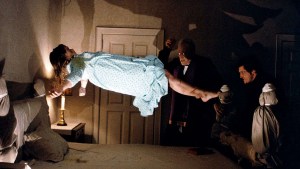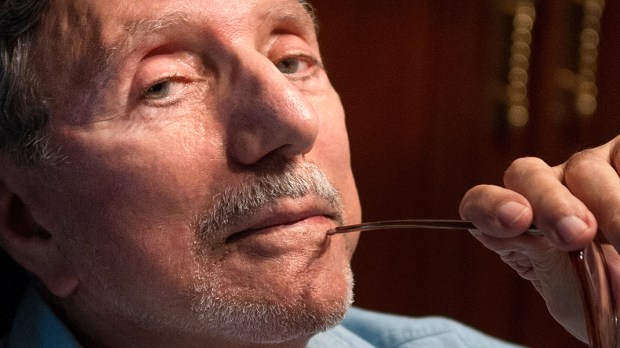Often cited as “the scariest movie ever made,” The Exorcist, based on the 1973 novel by William Peter Blatty, brought the Catholic Rite of Exorcism to the big screen with its unforgettable tale of a possessed 12-year old girl, her mother’s desperate search for help and the priests that eventually come to her aid.
What some may not recall from the film is the role a Ouija board plays in Regan’s possession. Early in the movie, Regan’s mother Chris asks her daughter if she knows how to use the family Ouija board, and Regan answers that she plays with “Captain Howdy.”
“Who is Captain Howdy?” asks Chris. “You know. Captain Howdy. I ask the questions and he gives the answers!”
The Ouija board, far from a harmless parlor game, is then established as the way the devil, in the form of “Captain Howdy,” gained access to Regan’s soul.
Blatty, who died earlier this year, acknowledged in a 1972 interview with British journalist Ray Connolly that while finishing his book The Exorcist, he had a personal experience with a Ouija board that convinced him that he was communicating with some kind of spirit.
When asked if he ever frightened himself while writing the book, Blatty said:
Well, I don’t want to sound like a nut but as I was writing the last chapter and the epilogue I did have a series of bizarre experiences. For the first time in my life I got hung up on a Ouija board for 10 days. I’d never done it before but I found I couldn’t leave it alone. And I had the most definite feeling that I was communicating with the dead. Yes, I agree an awful lot of it could be auto-suggestion, and I knew all about how Ouija boards worked because I’d researched it so much for the book, but there were certain things which are not susceptible to explanation by the subconscious mind. I thought it was my father communicating with me, and I got someone in to help validate the experience. She was a girl who could put herself into a self-imposed hypnotic trance and who would operate the planchette on the Ouija board. I didn’t touch it at all, and asked the questions in Arabic, which she didn’t understand a word of, and I got precisely the right answers. But then I thought well maybe subconsciously I was formulating the answers in English and she was picking them up from me telepathically.
Blatty told Connolly that after experimenting with the Ouija board he continued strange, unexplainable things continued to happen:
But then there were poltergeist experiences. Doing revision of the book at a friend’s house, the telephone rang and suddenly the receiver leapt off the hook. It happened to him first and then to me. So I asked a friend who did the acoustics for the Kennedy Center what the possibilities were electrically and he said it was impossible. Then telephone engineers in two states confirmed that it was impossible. But we both saw it happen. That was the culmination of several incidents, but it was the one that in no way could be explained. An electric typewriter wrote a line of gibberish, but what do I know about electricity. Maybe there was a short circuit somewhere. That was possible.
While later in life Blatty became a devout practicing Catholic, at the time of the interview he described the depth of his Catholicism as “relaxed.” Nonetheless, he said that his research and experiences while writing the book left him convinced that demonic possession is real.
“Now while 97 or 98 per cent of the reported cases of possession can be explained by either fraud or a mental disturbance there still remains the two or three per cent that can’t. And, concerning these, I have made a prudent judgment that a bodyless, intelligent, non-human entity has somehow managed to take possession of a human being,” he said.

Read more:
The true story behind ‘The Exorcist’
Read more:
Ouija Isn’t Just a Silly Game—and It’s Making a Comeback This Christmas

